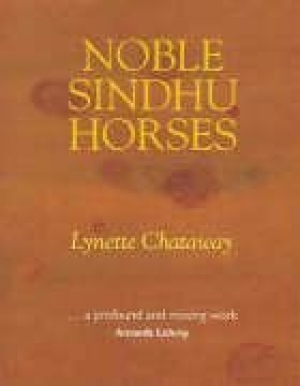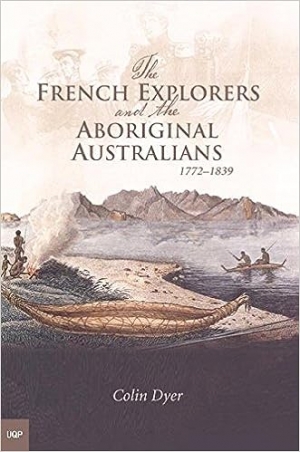Archive
Jonathan Pearlman reviews 'Righteous Violence: The Ethics and Politics of Military Intervention' edited by Tony Coady and Michael O’Keefe and 'A Matter of Principle: Humanitarian Arguments for War In Iraq' edited by Thomas Cushman
The fears and tensions in the aftermath of September 11 created an unusual political climate in the US, in which it became possible for the government to lead an invasion without having to explain precisely why. Nobody seemed to quite know who or what was guiding the administration as it led the charge for war: was it utopian neo-conservatives trying to reshape the world in America’s image? Was it isolationist hawks trying to wipe out an old foreign foe? Was it oil-hungry Texans? Was it paranoid security advisers, regretful of their failures and with a new bent for pre-emption, no matter how distant the threat?
... (read more)Ian Barker reviews 'Dowling’s Select Cases, 1828 To 1844' edited by T.D. Castle and Bruce Kercher
The prodigious effort that went into the compilation of Dowling’s Select Cases was entirely consistent with his own approach to judicial office, including producing the copious writings that found their way into the book. As Dr Bennett put it in his biography of James Dowling (2001), industry and perseverance were the hallmarks of Dowling’s accomplishments. To produce the chronicle now published, the editors and their helpers followed Dowling’s notes through his nine volumes of cases, cross-referencing many to his 268 judicial notebooks. The cases were recorded by Dowling by hand and required considerable typing. They are arranged chronologically and according to subject matter. The book will not be a threat to Harry Potter but will endure as of considerable interest to lawyers and historians.
... (read more)David Gilbey reviews 'The Paradoxes of Water: Selected and new poems 1970–2005' by Rod Moran
One of the things Rod Moran is good at is an oxymoronic tenacity – a kind of deliberate insouciance, a restrained violence – due to his embrace of metaphor. His best poems articulate disturbing comparisons and create surreal hybrids. You can see this in some of the early poems from High Rise Sniper (1970–80) selected for this new collection, such as ‘Chemical Worker’: ‘this pure acid, like some cruel psalm, / gives us daily bread ... [the living] / have a place in the maggot’s equation.’ Or, from ‘Cross Country’: ‘half a galah flock/ is spattered in its own pink / feathers and gore in mad array, / swimming down the highway / like grotesque fish / in the heat’s bright lagoon.’ The poems have an intensity that demands considerable attention and makes every line count.
... (read more)Anne Pender reviews 'Dearest Munx: The Letters of Christina Stead and William J. Blake' by Margaret Harris
This edition of Christina Stead’s letters to her lifelong partner, William J. Blake, offers an intriguing window into a passionate literary marriage. It also provides a welcome addition to Stead studies. Readers do not often have access to the personal letters of a great writer, let alone access to such a rich correspondence between a writer and his or her partner. As Stead’s partner was also a writer, this correspondence is peculiarly and delightfully literary.
... (read more)Ann McGrath reviews 'Aboriginal Victorians: A history since 1800' by Richard Broome
The sepia-toned photograph on the front cover of historian Richard Broome’s new book presents the reader with two young indigenous Australian boys, taken around 1900 at Ramahyuck, an ‘Aboriginal mission’. Bright-eyed, alert and pleased with themselves in white shirts, woollen vests, jackets and trousers, they appear to be wearing possum or kangaroo skin cloaks. A closer look, however, reveals that the furs draped thickly around their shoulders are not iconic cloaks, but their successful catch of tasty rabbits.
... (read more)Michelle Haines Thomas reviews 'Noble Sindhu Horses' by Lynette Chataway and '98% Pure' by J.D. Cregan
With broadly similar subjects – Australians in South-East Asia – and related themes that touch on culture shock and existential angst, you could be forgiven for thinking that Noble Sindhu Horses and 98% Pure might have something in common. But these two first novels are a lesson in the difference that self-control and sensitivity on the part of the writer, and good judgment on the part of the editor, can make. To draw on the Asian motif for a moment, Noble Sindhu Horses is a delicate Asian broth, restrained and subtly flavoured, while 98% Pure is street-vendor chop suey – a bit of a mess and not so good for your health.
... (read more)Alison Ravenscroft reviews 'Kayang and Me' by Kim Scott and Hazel Brown
Readers of Kayang and Me should not be lulled by the beauty of its prose or by its seemingly easy location within the now-familiar genre of indigenous life story. This book dislodges its white readers from positions of quietude or certainty, and takes us into a world marked by irredeemable loss – our own as well as Noongars’. Among other things, Kayang and Me points to the crucial things that settler-colonisers have lost or forsaken in the mistaken pursuit of the bounties of colonisation, and it calls for nothing less than a radical remaking of the Australian nation-state. Significantly, it installs writing and reading as practices through which the past, present and future might come to be differently known and newly imagined. The white reader is shown to be implicated in the story she holds in her hands, in its vision of another future as well as in its tragic present and past.
... (read more)Peter Pierce reviews 'Babes In The Bush: The making of an Australian image' by Kim Torney
The central contention of Kim Torney’s Babes in the Bush: The making of an Australian image is that ‘the lost-child image continues to resonate with Australians’. The cover illustration is from Frederick McCubbin’s famous painting Lost (1886), which Torney elevates to ‘the iconic image of the lost child story’. The task set out in these assertions, and iterations of them, is to find why the image continues to resonate in Australia now that the phenomenon of children lost in the bush is such a rarity, compared with the nineteenth century. (Torney quotes the alarming statistic from the Melbourne Argus index for the 1860s of seventy children fatally lost in the bush.)
... (read more)Allan Patience reviews 'Speight of Violence: Inside Fiji’s 2000 coup' by Michael Field, Tupeni Baba and Unaisi Nabobo-Baba
The cliché of the South Pacific as a tropical paradise is contradicted by the hellishness of the Melanesian/Polynesian political scheming that characterises most of the region. It is a form of scheming that would make Byzantine politics appear like the polite equivalent of an election for office in the Country Women’s Association. From Port Moresby to Suva, political élites hide behind a fraying façade of democratic governance while slyly engaging in corruption, crime, venality and spite in their dealings with each other and with the citizens they pretend to govern. Many are adept at manipulating the language of anti-colonialism to colonise their own peoples. The ramshackle states they have constructed cannibalise public resources, including resources donated by overseas governments and aid agencies. The South Pacific is becoming a zone of indefensible human suffering. This can be seen in the collapsed ‘state’ of Nauru, the recent violent civil conflicts in the Solomon Islands and Bougainville, and the looming governance crisis in Papua New Guinea. Fiji illustrates the South Pacific’s ‘hell in paradise’ theme vividly with its two coups in 1987 (led by Sitiveni Rabuka) and the even worse misfortunes of the Chaudhry Government in May 2000 at the hands of the notorious George Speight.
... (read more)Vesna Drapac reviews 'The French explorers and the Aboriginal Australians 1772–1839' by Colin Dyer
In this book, Colin Dyer draws on the writings of French explorers from ten expeditions spanning the years between 1772 and 1839. His aim is ‘to enable readers to make as close an acquaintance as possible directly with the French explorers and the Aboriginal Australians during their encounters’. He presents the material with little contextual information or analysis, maintaining that he has ‘no personal axe to grind … no thesis or argument to prove, no preconceived conclusion to impose’. This stance, as we will see, has its advantages and its limitations.
... (read more)









